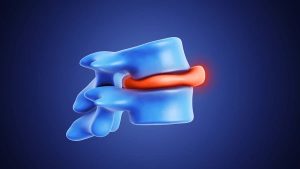What is Spinal Manipulation and Why is it Used?
Spinal manipulation is a therapeutic intervention that involves the application of controlled force to the joints of the spine. This technique is primarily employed by healthcare professionals, such as chiropractors and osteopaths, to alleviate pain, improve mobility, and enhance overall spinal function.
The rationale behind spinal manipulation lies in its ability to restore proper alignment and movement within the vertebral column, which can subsequently lead to improved nervous system function and reduced discomfort.
The Primary Goals of Spinal Manipulation
Pain Relief: One of the foremost objectives of spinal manipulation is to alleviate pain, particularly in the back, neck, and joints. By realigning the vertebrae and addressing misalignments, spinal manipulation can significantly reduce discomfort.
Improve Mobility: Spinal manipulation aims to enhance the range of motion in the spine and surrounding areas. This increased mobility allows individuals to engage more freely in daily activities without restrictions caused by stiffness or pain.
Restore Function: A critical goal of this therapeutic approach is to restore proper function to the musculoskeletal system. By correcting spinal alignment, patients often experience improved bodily functions that contribute to overall well-being.
Enhance Overall Health: Beyond localized benefits, spinal manipulation can positively impact an individual’s general health by promoting better nervous system function and improving blood circulation throughout the body.
Reduce Muscle Tension: Spinal manipulation also seeks to alleviate muscle tension that often accompanies spinal misalignments. By relaxing tight muscles, patients may experience reduced stress levels and improved physical comfort.
How Spinal Manipulation Affects the Body’s Nervous System
When spinal manipulation is performed, it aims to restore proper alignment and function of the vertebrae, which can significantly influence neural pathways.
The adjustment of spinal joints can alleviate pressure on nerves and enhance communication between the brain and various body parts. Improved spinal alignment has been associated with reduced pain perception, increased range of motion, and enhanced overall bodily function.
The Role of Spinal Manipulation in Treating Specific Conditions
Chronic Pain Management: Spinal manipulation has been widely recognized as an effective method for managing chronic pain conditions. By realigning the spine and improving mobility, patients often experience significant reductions in pain levels and enhanced overall quality of life.
Headaches Treatment: Numerous studies indicate that spinal manipulation can be beneficial for individuals suffering from tension-type headaches and migraines. This therapeutic approach targets the cervical spine, which can alleviate tension and reduce the frequency and intensity of headache episodes.
Sciatica Relief: For patients experiencing sciatica, characterized by pain radiating along the sciatic nerve, spinal manipulation offers a non-invasive treatment option. By adjusting misalignments in the lower back, practitioners can help relieve pressure on the sciatic nerve, leading to decreased pain and improved function.
Sports Injuries Recovery: Athletes often face various musculoskeletal injuries that can hinder performance. Spinal manipulation aids in accelerating recovery by promoting better alignment, enhancing flexibility, and reducing inflammation associated with sports injuries.
Postural Issues: Poor posture is a common issue that can lead to numerous health complications over time. Spinal manipulation serves as an effective intervention to correct postural imbalances, thereby preventing further complications such as chronic pain or degenerative changes in the spine.
In conclusion, spinal manipulation presents a multifaceted approach to treating various conditions through targeted interventions aimed at restoring balance and functionality within the body.






